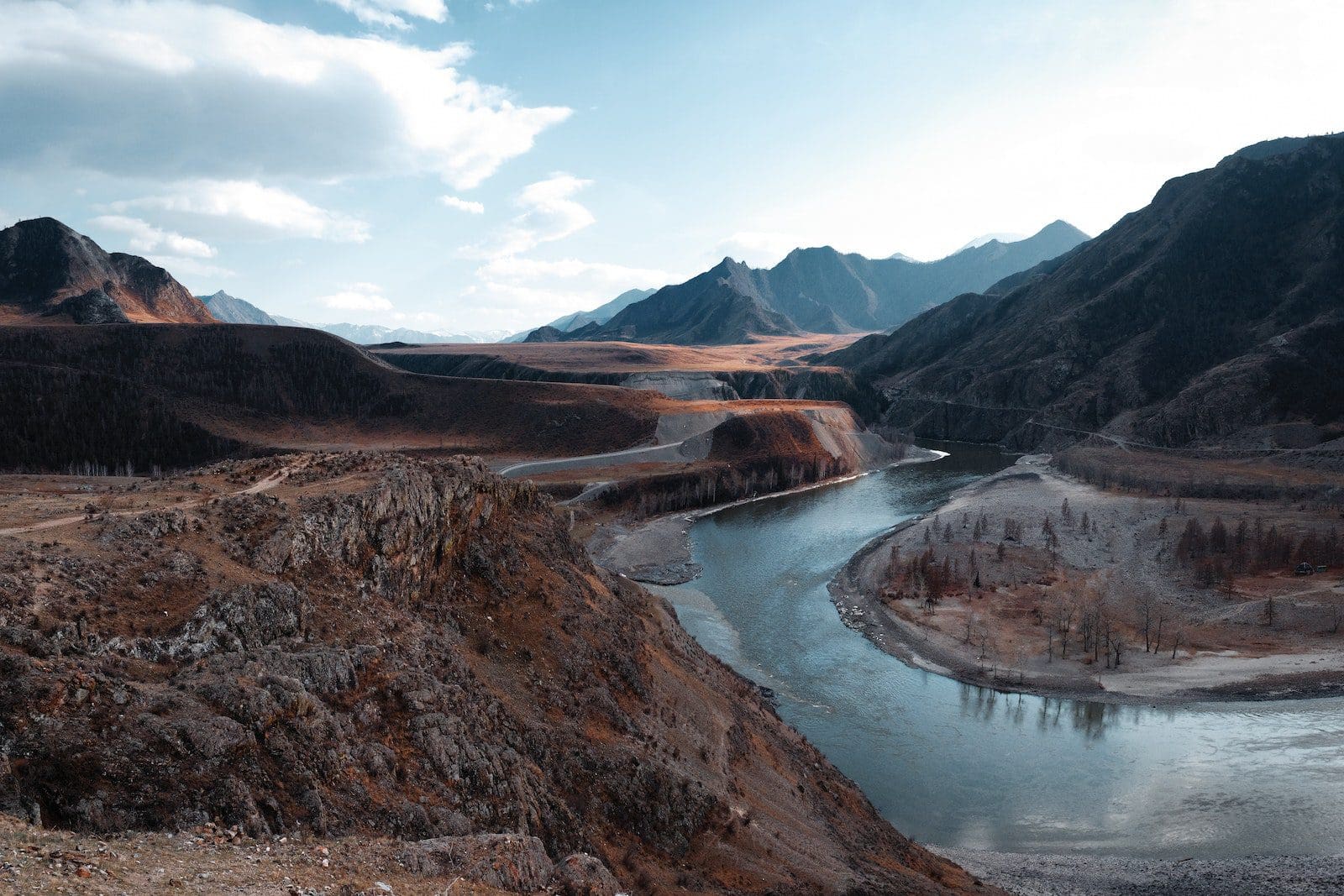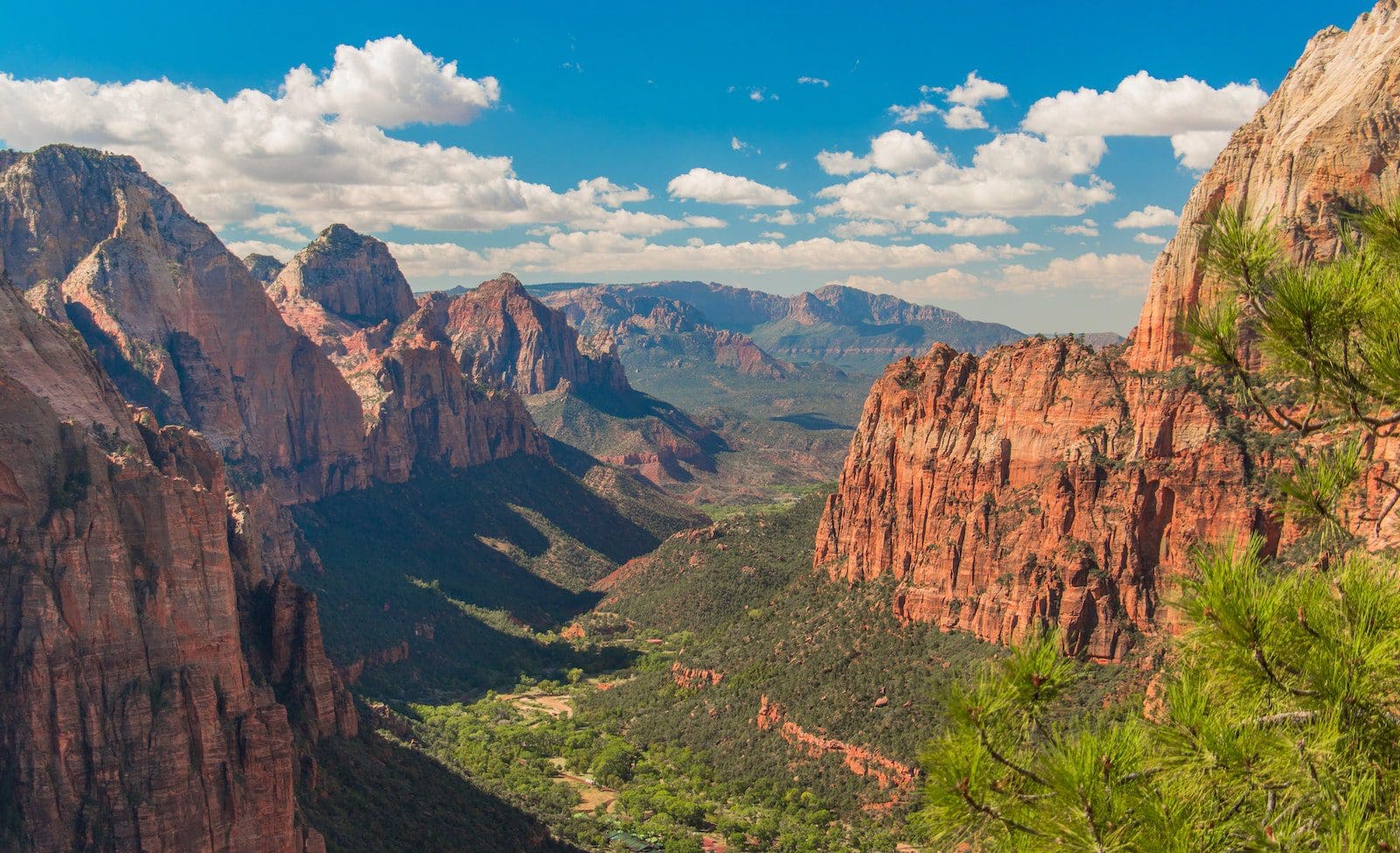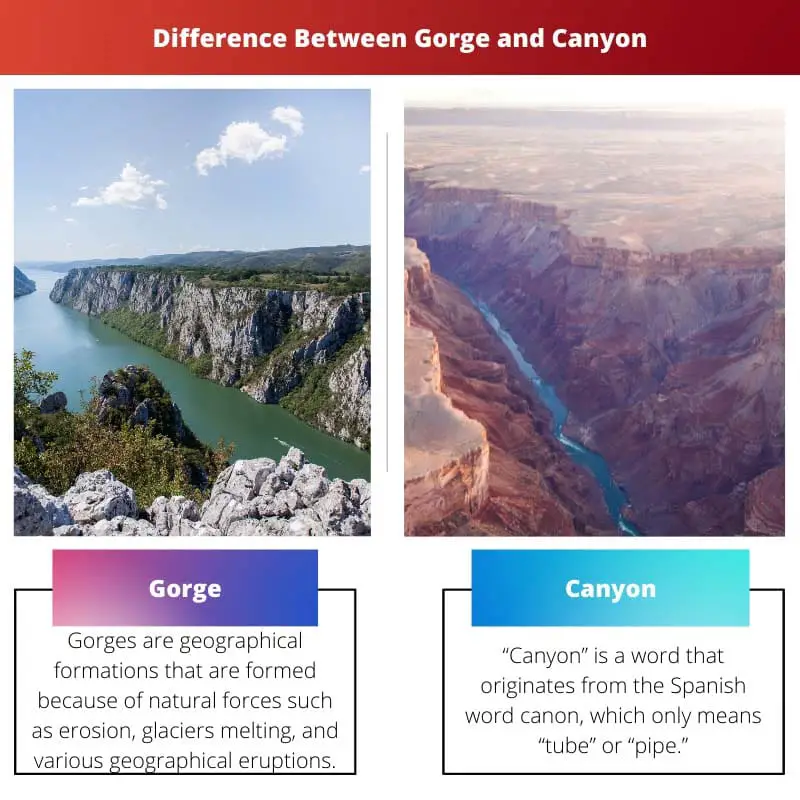Gorges and Canyons are geographical structures that belong to the family of valleys. Canyons and gorges are geographical landforms belonging to the broad categories of valleys.
Key Takeaways
- A Gorge is a narrow, steep-sided valley carved by a river, while a canyon is a deep, narrow valley with steep sides, with a river running through it.
- A Gorge is shorter and narrower than a canyon.
- Gorges are formed by rapid erosion, while a combination of erosion and tectonic activity forms canyons.
Gorge vs. Canyon
A gorge is a narrow valley with steep, rocky walls, carved from the earth by a river, and is smaller and narrower. A canyon is a deep, narrow valley with steep sides, with a river flowing through it, and it is larger and wider than a gorge.

Gorges are principally developed because of the course of water or lava. The flanks of gorges are also created of sandstone and granite. Some gorges have limestone structures that have formed complex cave formations in the gorges.
Canyons are created by extended times and persistent depletion from an elevation level. The cliffs are made as these hard rocks are immune to weathering or erosion.
Comparison Table
| Parameters of Comparison | Gorge | Canyon |
|---|---|---|
| Proportions | As per proportions, Gorges are smaller than Canyons. | Canyons are considered to be larger than Gorges. |
| Depth | Gorges and Canyons are both deep, but Canyons are frequently more expansive than Gorges. | Gorges are also termed ravines because of their narrow nature. Valleys are narrower than Canyons. |
| Region | Gorges are located in areas that have temperate regions. E.g., Mountain Ranges. | Meanwhile, Canyons are located in arid regions where the climate is dry and deserty. |
| Formation | Gorges are formed because of the flow of water or lava. | Canyons are formed because of erosion on a flat-based plateau level as well as weathering of complex rock forms are the cause why Canyons are formed. |
| Usage | The term ‘Gorges’ is more widely used in Europe. | Meanwhile, the term ‘Canyons’ is used in the United States of America. |
What is Gorge?
Gorges are geographical formations formed by natural forces such as erosion, melting glaciers, and various geographical eruptions.
The movement of Earth’s surface, known as the geologic uplift of tectonic activity, has been associated with creating these gorges. In most cases, geologic uplift goes hand in hand with weathering.
Gorges are formed due to the lava flow and the water stream in between the valleys. They are made up of sandstone and granite.
They are associated with rivers and flowing water. Some gorges go back thousands of years when scientists discovered famous fossils and prints of animals and plants.

What is Canyon?
“Canyon” is a word that originates from the Spanish word canon, which only means “tube” or “pipe.” “Gorge” is a term used as an alternative for the term “canyon,” but a gorge is nearly invariably more precipitous and cramped than a canyon.
The most well-known example is the river canyon. Canyons are formed by water force from a nearby river stream that can punctuate within a river bed.
The Yarlung Zangbo Grand Canyon in Tibet was formed over millions of years because of the Yarlung Zangbo River. This Canyon is the deepest and longest in the world.

Main Differences Between Gorge and Canyon
- Gorges are formed because of the flow of water or lava. Whereas Canyons are primarily formed because of erosion on a flat-based plateau level, as well as weathering of complex rock forms, is the cause why Canyons are formed.
- The term ‘Gorges’ is more widely used in Europe. Meanwhile, the term ‘Canyons’ is used in the United States of America.



